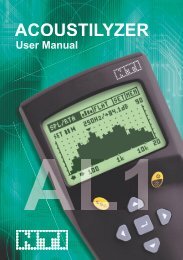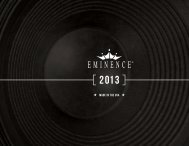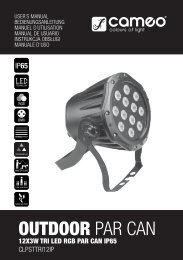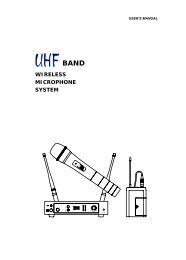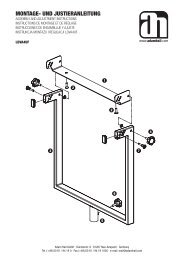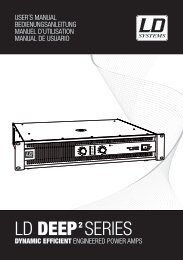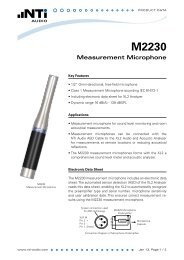Speech Intelligibility - Elma Instruments
Speech Intelligibility - Elma Instruments
Speech Intelligibility - Elma Instruments
Create successful ePaper yourself
Turn your PDF publications into a flip-book with our unique Google optimized e-Paper software.
Subjective analysis methods<br />
APPlicAtion note<br />
National standards - see Figure 1 - require the verification of<br />
electro-acoustic sound systems for emergency purposes under<br />
realistic circumstances to ascertain a minimum level of speech intelligibility<br />
in case of an emergency. Thereby, speech intelligibility<br />
from a regulatory view is not a subjective measurement, but can<br />
be verified with several, more or less complex methods that have<br />
been standardized in IEC 60268-16.<br />
Other national or local regulatory bodies implement recommendations<br />
or requirements to conduct these measurements for maintaining<br />
minimum speech intelligibility.<br />
Standard: IEC 60268-16, Objective rating of speech intelligibility<br />
by speech transmission index<br />
National standards:<br />
ISO 7240 Fire detection and alarm systems, section 16 & 19<br />
NFPA 72 National Fire Alarm Code (2010 edition)<br />
BS 5839-8 Fire detection and alarm systems for buildings. Code of practice for<br />
the design, installation and servicing of voice alarm systems<br />
DIN 60849 System regulation with application regulation DIN VDE 0833-4<br />
Figure 1: A minimum of speech intelligibility is standardized<br />
Although frequency response, reverberation, distortion, signal-tonoise<br />
ratio or loudness are related to intelligibility, the conventional<br />
measurements of these parameters together only marginally<br />
relate to intelligibility. When added issues, such as directionality<br />
of drivers and the environment conditions are taken into consideration,<br />
the question is: How well a spoken message can be understood<br />
at different locations?<br />
The fundamental approach measuring intelligibility is to let a<br />
trained human speaker read a number of existing or synthetic<br />
words, whereas a representative number of listeners individually<br />
write down what they believe of having understood. The statistical<br />
analysis of these notes results in a value representing the<br />
percentage of words being understood correctly. Standardized<br />
procedures according to this method are PB-words, CVC or SRT<br />
(<strong>Speech</strong> Reception Threshold). However, conducting such tests<br />
is rather time consuming and costly, as well in some hazardous<br />
locations even impossible. Therefore, these methods are mainly<br />
used to verify alternate measurement methods.<br />
www.nti-audio.com Page 2 / 14



